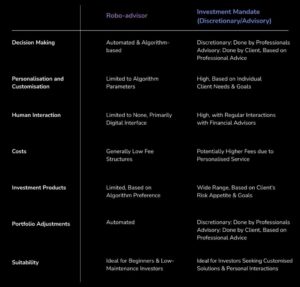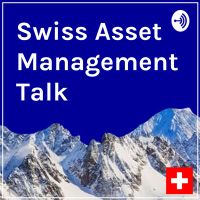Jun 17, 2025
Bonds are among the most essential — yet often misunderstood — components of the financial markets. Understanding the fundamentals of bonds, how they are priced, how their yields behave, and what they reveal about broader economic and financial conditions is crucial to grasping the bigger picture of the economy and building investment strategies.
A bond is a type of investment known as a fixed-income instrument. The name itself gives away its defining feature: it delivers a fixed income to the investor over time.
Essentially, when you buy a bond, you are lending money to the bond issuer — which could be a company, like Nestlé, or a government, like Switzerland.
If the issuer is a company, the bond is referred to as a corporate bond. If the issuer is a government, it’s called a sovereign bond. Though the issuers differ, both types of bonds function in much the same way.
All bonds share three key characteristics:
- Face Value (or Par Value)
- Coupon Rate
- Maturity Date
Face Value (or Par Value)
This is the original value of the bond — the amount the investor will be repaid at maturity. It’s a round number as $100 or 1,000 Swiss francs, depending on the market. While this value remains constant over the bond’s lifetime, the bond’s market price can fluctuate due to various factors, such as interest rate changes and market sentiment.
Coupon Rate
The coupon rate is the fixed interest payment the bondholder receives periodically — typically annually or semi-annually. For example, if a bond has a face value of $100 and pays a $5 annual coupon, its coupon rate is 5%.
Maturity Date
Every bond has a defined lifetime. It might mature in two, five, ten, twenty, thirty years, or even in a century! Upon reaching the maturity date, the issuer repays the face value to the bondholder. Some bonds, called perpetual bonds, have no maturity date — they continue paying interest indefinitely. Unlike stocks, which have no defined lifespan, bonds offer a clear investment horizon.
When you buy a bond, you receive periodic interest (the coupon) and eventually get your principal back at maturity. If you decide to sell your bond before maturity, you can do so at the market price, which may be higher or lower than the face value.
Now comes the slightly more complex — but crucial — part: understanding the relationship between a bond’s price and its yield.
Although a bond is issued at face value (say, $100), its market price may rise or fall over time.
And in bond markets, we rarely talk about price directly. Instead, we focus on yield, which is the return on investment expressed as a percentage.
Let’s use an example:
Suppose a bond with a $100 face value pays a $5 coupon per year. At issuance:
- Coupon rate = 5%
- Price = $100
- Yield = 5%
Now imagine the bond’s price falls to $95 in the market. If you buy it at that price, you still receive $5 per year. But since you paid less upfront, your yield is now higher than 5%.
Conversely, if the bond’s market price rises to $105, the $5 coupon is still paid, but your return — or yield — is lower because you paid more to get the same income.
When bond prices go up, yields go down. When prices go down, yields go up. This inverse relationship is fundamental and unchanging.
It’s also important — and incredibly useful — to understand the different ways bond yields can be measured, as each variation tells a slightly different story about the bond’s value, performance, and potential returns. Let’s explore three of the most commonly referenced yield types: Nominal Yield, Current Yield, and Yield to Maturity (YTM).
Nominal Yield
Also called the “coupon yield,” the nominal yield the most straightforward of the three. It’s calculated by taking the annual coupon payment (the amount the bondholder receives each year from the issuer) and dividing it by the bond’s face value, also known as par value. For example, if a bond has a face value of $1,000 and pays a $50 annual coupon, its nominal yield is 5%.
However, this figure doesn’t reflect any changes in the bond’s price over time or provide insight into the broader market environment. It’s essentially a static measure that tells you what the bond pays in interest each year based solely on its original terms.
Current yield
Current Yield takes things a step further by incorporating the bond’s current market price. It is calculated by dividing the annual coupon payment by the price at which the bond is currently trading. This is particularly relevant for bonds trading at a premium (above par) or a discount (below par). For example, if that same $1,000 face value bond with a $50 coupon is currently selling for $900, the current yield would be approximately 5.56%. Conversely, if it’s trading at $1,100, the current yield drops to around 4.55%.
This measure gives investors a snapshot of the income return they can expect based on the current purchase price, but it still doesn’t account for gains or losses that occur when the bond matures.
Yield to Maturity
That brings us to the most comprehensive and widely used measure: Yield to Maturity (YTM). This yield calculation is more complex, as it considers not only the annual coupon payments and the bond’s current market price but also the time remaining until the bond matures and the difference between the purchase price and the bond’s face value at maturity.
YTM essentially represents the internal rate of return (IRR) of the bond if held to maturity — it’s the total return an investor can expect to earn, assuming they reinvest coupon payments at the same rate and hold the bond until it matures. Because YTM incorporates both income (via coupons) and capital gains or losses (depending on whether the bond was bought at a discount or premium), it offers the most complete picture of a bond’s profitability.
Among these three yield measures, Yield to Maturity is often considered the most informative and reliable, especially for long-term investors or those evaluating different bond options.
It provides a way to compare bonds with different prices, coupon rates, and maturities on a consistent, apples-to-apples basis. While nominal yield and current yield can be useful for quick reference or assessing income potential, YTM delivers a much deeper understanding of the bond’s total return potential over its full life. It’s the go-to metric for anyone trying to make sound, data-informed fixed income investment decisions.
Several factors affect bond prices and their yields.
1. Interest Rates
This is the single most important factor. When central banks raise interest rates, existing bonds become less attractive because new bonds offer better returns. As a result, the price of existing bonds falls, and their yields rise.
The math behind this involves discounting future coupon payments at the new, higher interest rate — the higher the discount rate, the lower the present value (i.e., the price) of the bond.
2. Credit Risk
Higher-risk borrowers must offer higher yields to attract investors. A bond issued by a startup will usually have a higher coupon than one issued by a financially stable government, reflecting the higher risk of default.
3. Maturity
Longer-dated bonds generally offer higher yields than shorter-dated bonds to compensate investors for tying up their money for a longer time. This is known as the term premium.
Sometimes, the term premium turns negative — a phenomenon known as an inverted term premium. This reversal is more than a technical oddity; it’s often viewed as a canary in the coal mine, warning that a recession may be looming.
But in regular market conditions, shorter-term bond yields are lower than their longer-term peers.
When navigating the world of fixed-income investing, it’s essential to understand the different types of bonds available, as each comes with its own risk profile, return potential, and role within a diversified portfolio. Among the broad array of bond instruments, two of the most common categories are government bonds and corporate bonds. These instruments serve as the backbone of global debt markets and are routinely used by investors to generate income, preserve capital, or hedge against volatility in other asset classes.
Government Bonds: Stability and Security, But Not Without Questions
Government bonds are issued by national governments to fund public spending, infrastructure projects, and debt refinancing. These bonds are often seen as the most reliable and low-risk form of debt investment, particularly when issued by countries with strong, stable economies and well-established institutions. For example, government bonds from Switzerland, Germany, or the United States are typically considered ‘safe havens’ during times of market stress. They tend to offer lower yields because they carry a very low probability of default, meaning investors are highly confident they will get their money back, plus interest.
These bonds are also widely used as benchmarks in financial markets.
The yield on the 10-year U.S. Treasury bond, for instance, is a reference point for everything from mortgage rates to the pricing of corporate bonds, and even stock market valuations.
However, even the safest assets are not immune to scrutiny. In recent years, there has been growing concern about the long-term sustainability of sovereign debt in some advanced economies, particularly in the United States.
The sheer scale of U.S. federal debt — now exceeding $34 trillion — has prompted debates about fiscal responsibility, the risk of higher interest rates crowding out productive investment, and the potential erosion of investor confidence in the long run.
While an actual default by the U.S. government remains highly unlikely, concerns about the political gridlock surrounding debt ceiling debates and the mounting cost of interest payments have led some analysts to re-evaluate the idea that government debt is always ‘risk-free.’
By contrast, corporate bonds are debt securities issued by companies to raise capital for business operations, expansion, acquisitions, or refinancing existing debt. These bonds come with a higher degree of risk than government bonds — primarily due to the possibility that the issuing company may not be able to meet its financial obligations in the future. If a company experiences financial difficulty, investors holding its bonds may suffer losses or, in a worst-case scenario, fail to recoup their capital entirely.
Because of this increased credit risk, corporate bonds typically offer higher yields than comparable government bonds.
This is especially true for bonds issued by companies without top-tier credit ratings. Even within the corporate bond universe, there is a wide spectrum of quality. At the high end, you’ll find investment-grade bonds — issued by financially sound firms like Nestlé, Microsoft, or Siemens. These companies are generally considered stable and have a relatively low chance of default. Nestlé, for example, may issue a bond that offers a higher coupon than a Swiss government bond, even though both are based in the same country. The reason? Companies — even highly reputable ones — can go out of business. Countries (usually) can’t.
Further down the scale, there are high-yield or “junk” bonds, which are issued by firms with lower credit ratings. These may offer very attractive returns but come with significantly elevated default risk.
Investors who venture into this space are often chasing higher income, but they must also be prepared for greater volatility and the possibility of losses, especially during economic downturns when corporate defaults tend to rise.
This dichotomy between government and corporate bonds highlights one of the fundamental principles in finance: the risk-return tradeoff. Put simply, the greater the risk an investor is willing to accept, the higher the potential return they demand in compensation. Low-risk assets like Swiss government bonds tend to offer modest, predictable returns. Higher-risk instruments — such as corporate bonds or emerging market sovereign debt — must entice investors with higher yields to account for the added uncertainty.
It’s this dynamic that allows investors to customize their fixed-income exposure according to their risk tolerance, income needs, and macroeconomic outlook.
Some investors might prefer the relative safety of government bonds, especially during times of recession or geopolitical instability. Others may opt for higher-yielding corporate debt to boost returns in a low-interest-rate environment or to diversify their portfolio beyond equities.
Bond creditworthiness is assessed by rating agencies such as:
- Moody’s
- Fitch
- Standard & Poor’s (S&P)
These agencies assign ratings based on the issuer’s financial health, ranging from AAA (highest quality) to junk status (speculative and risky).
For example:
- The U.S. government currently holds an AA+ rating from S&P.
- Apple also holds an AA+ rating — meaning the likelihood of Apple defaulting is considered comparable to that of the U.S. government.
- Switzerland holds a AAA rating, while Nestlé has a AA- rating.
Each rating agency has its own scale, but as a rule of thumb: More A’s and more plus signs mean less risk.
You may wonder: why should I care about all this?
Bond yields are a barometer for the economy. When yields on government bonds rise, it often reflects expectations of higher inflation or tighter monetary policy. Falling yields can signal investor caution or economic slowdown.
Moreover, bond markets influence everything from mortgage rates to corporate financing costs. And for investors, understanding bonds helps build a diversified portfolio — combining fixed income with equities, real assets, or other instruments depending on your goals and risk tolerance.
Therefore, understanding bonds is essential, not just for finance professionals but for anyone who wants to make informed financial decisions. While some of the concepts — like the inverse relationship between price and yield — might seem tricky at first, they’re fundamental building blocks of market literacy.
Ipek Ozkardeskaya is a senior market analyst. She has begun her financial career in 2010 in the structured products desk of the Swiss Banque Cantonale Vaudoise. She worked at HSBC Private Bank in Geneva in relation to high and ultra-high net worth clients. In 2012, she started as FX Strategist at Swissquote Bank. She worked as a Senior Market Analyst in London Capital Group in London and in Shanghai. She returned to Swissquote Bank as Senior Analyst in 2020.




